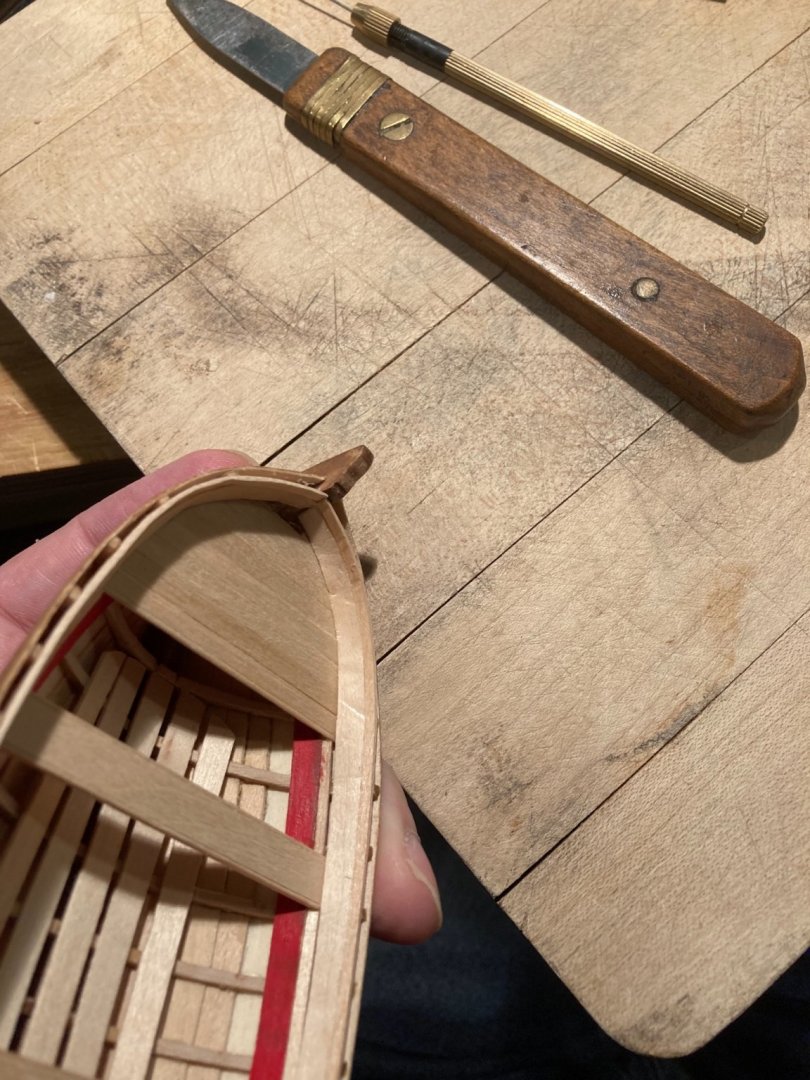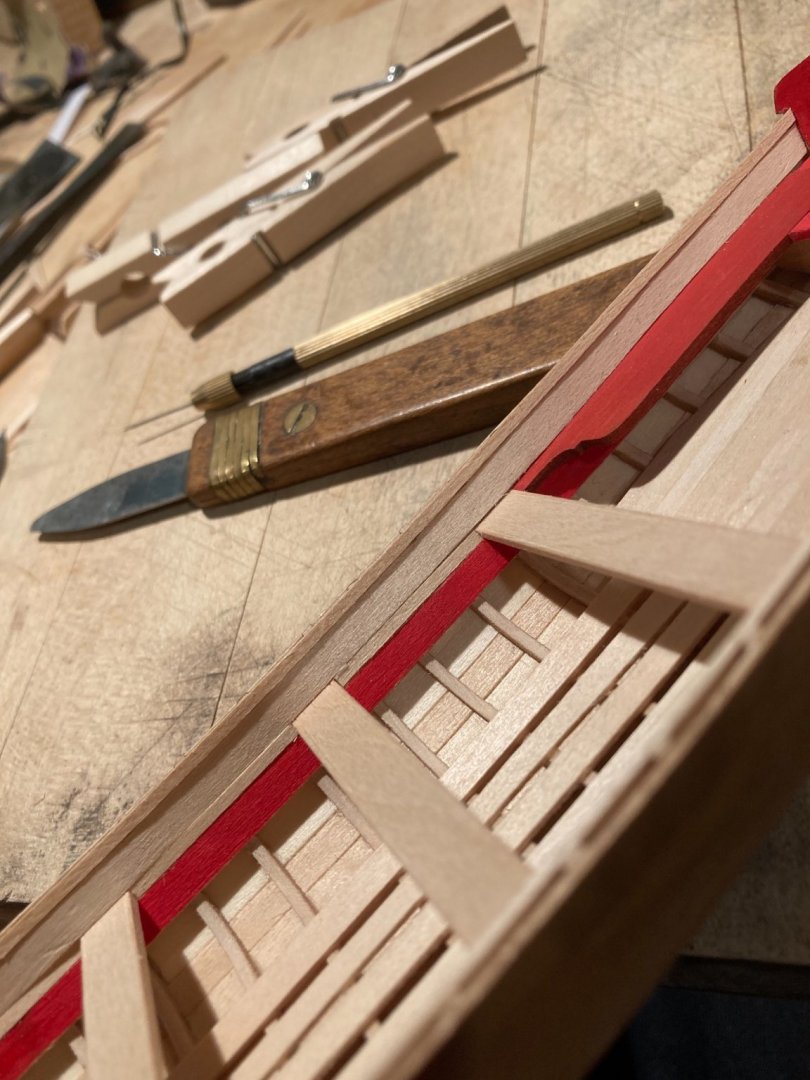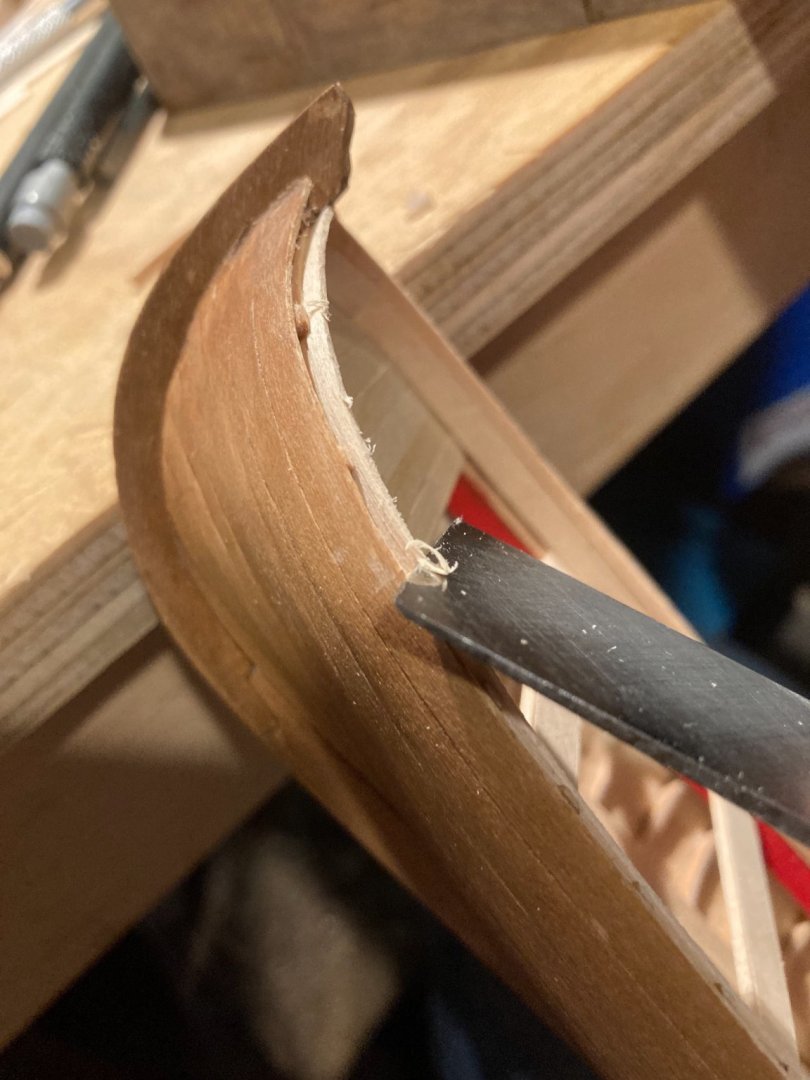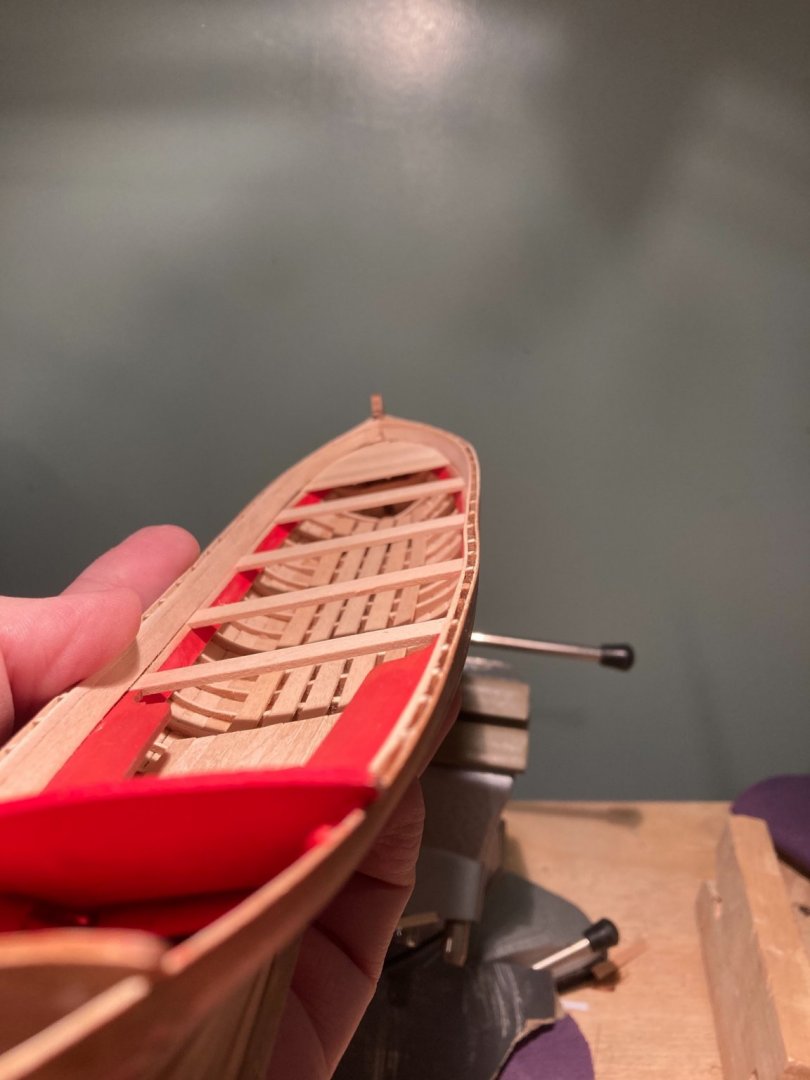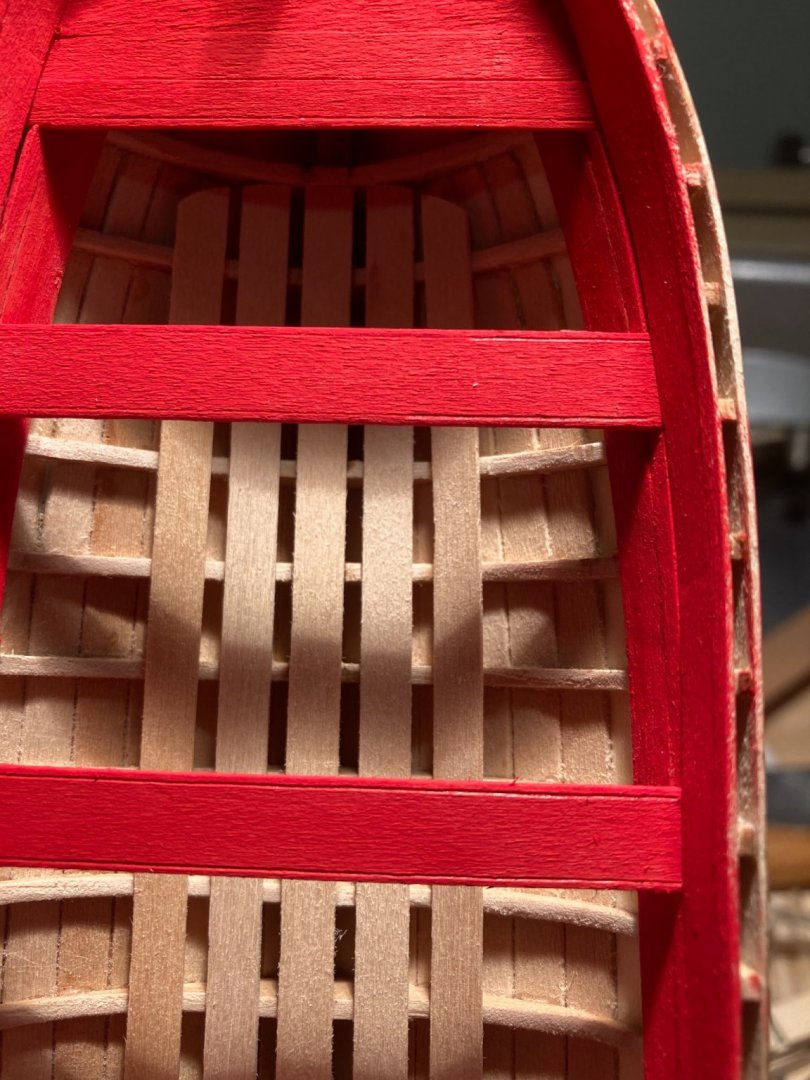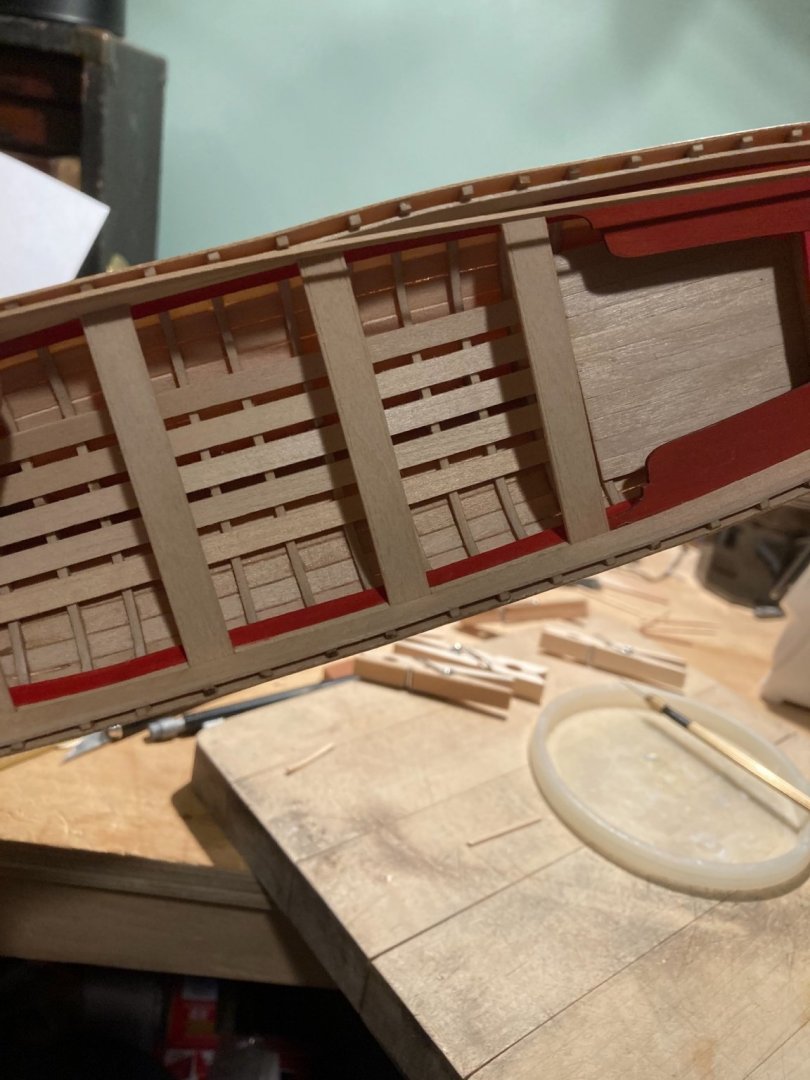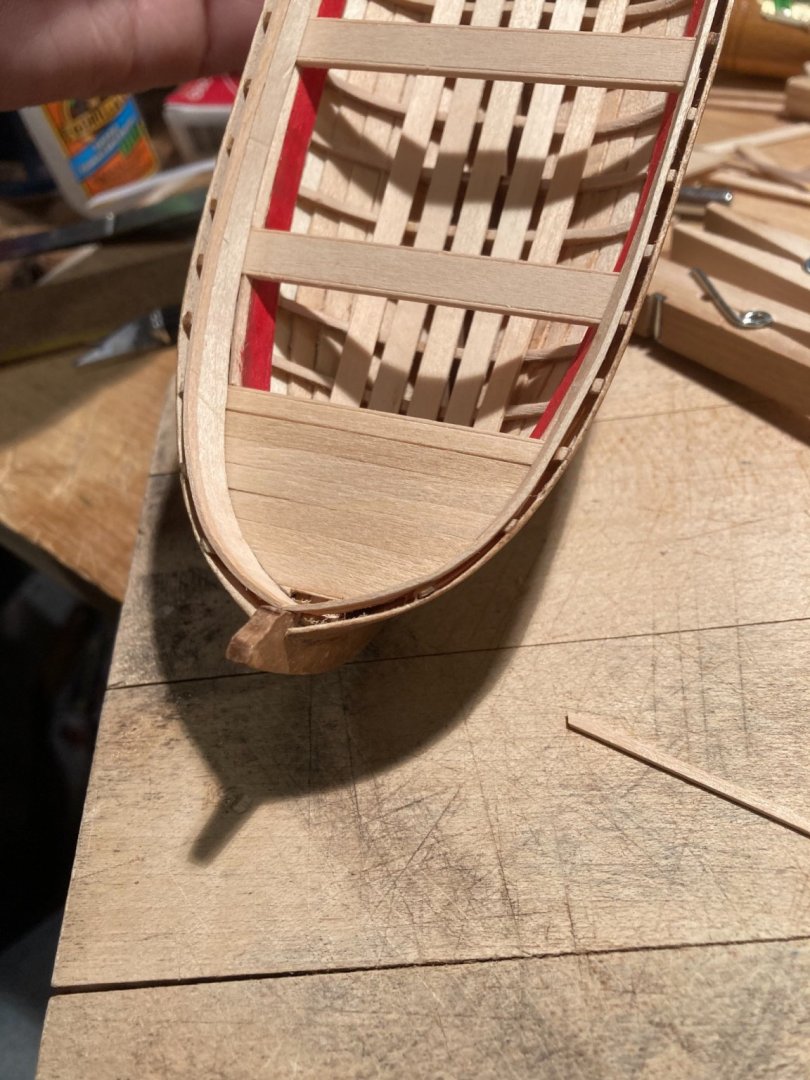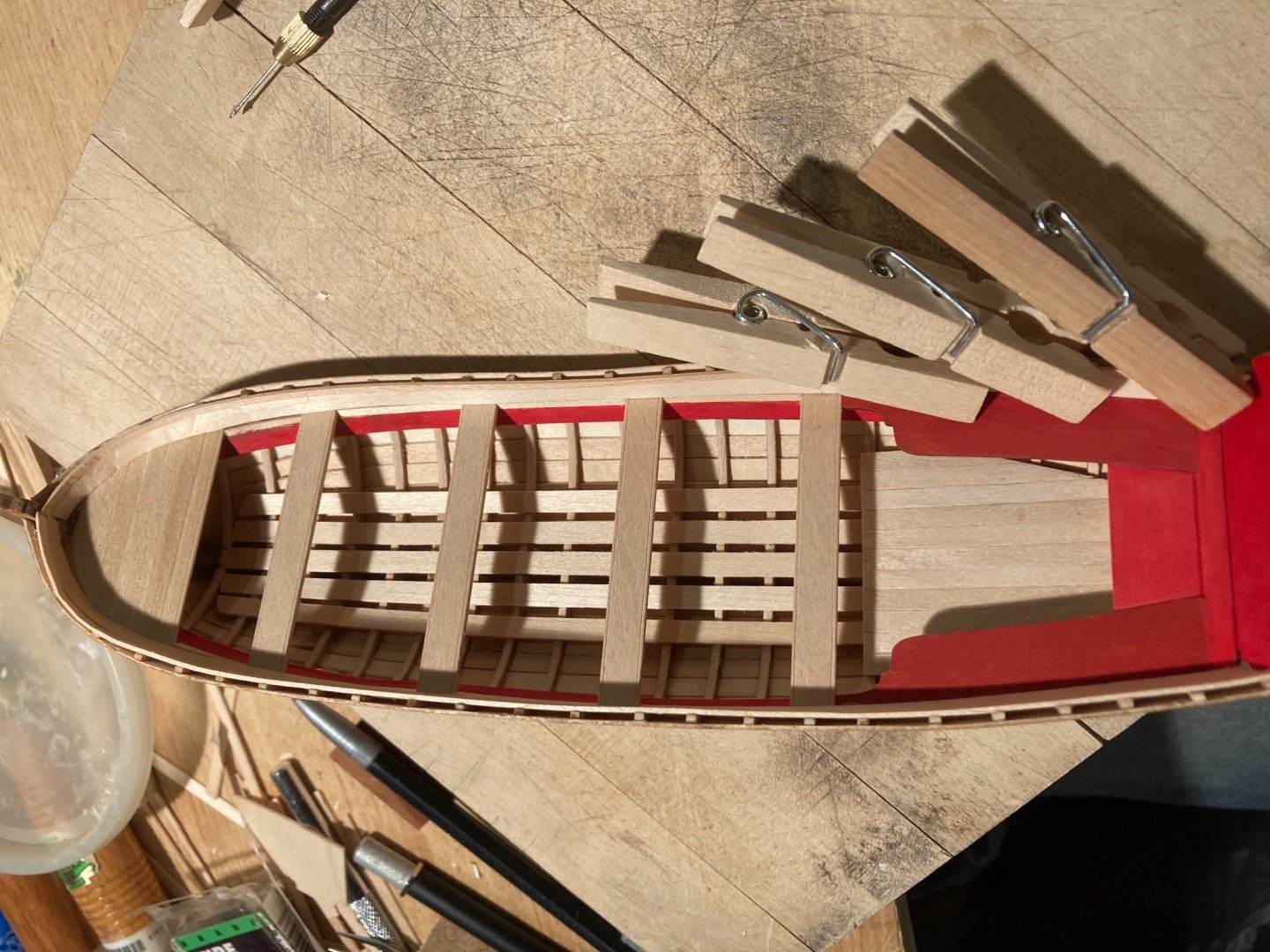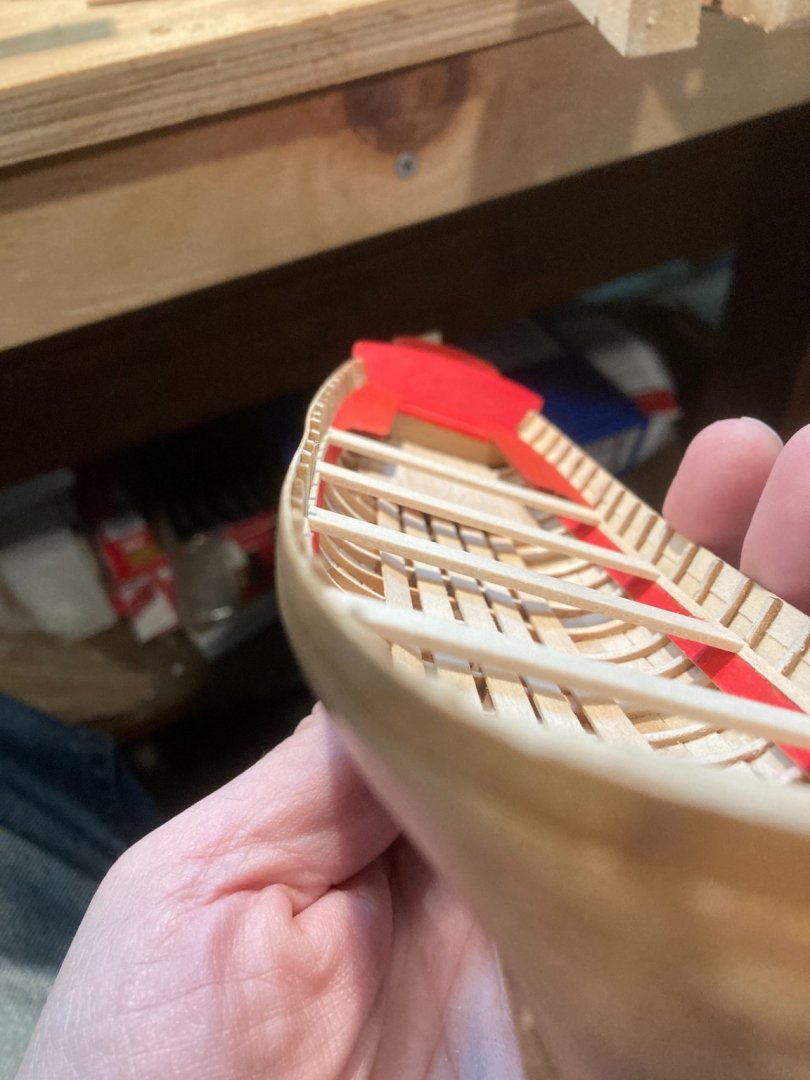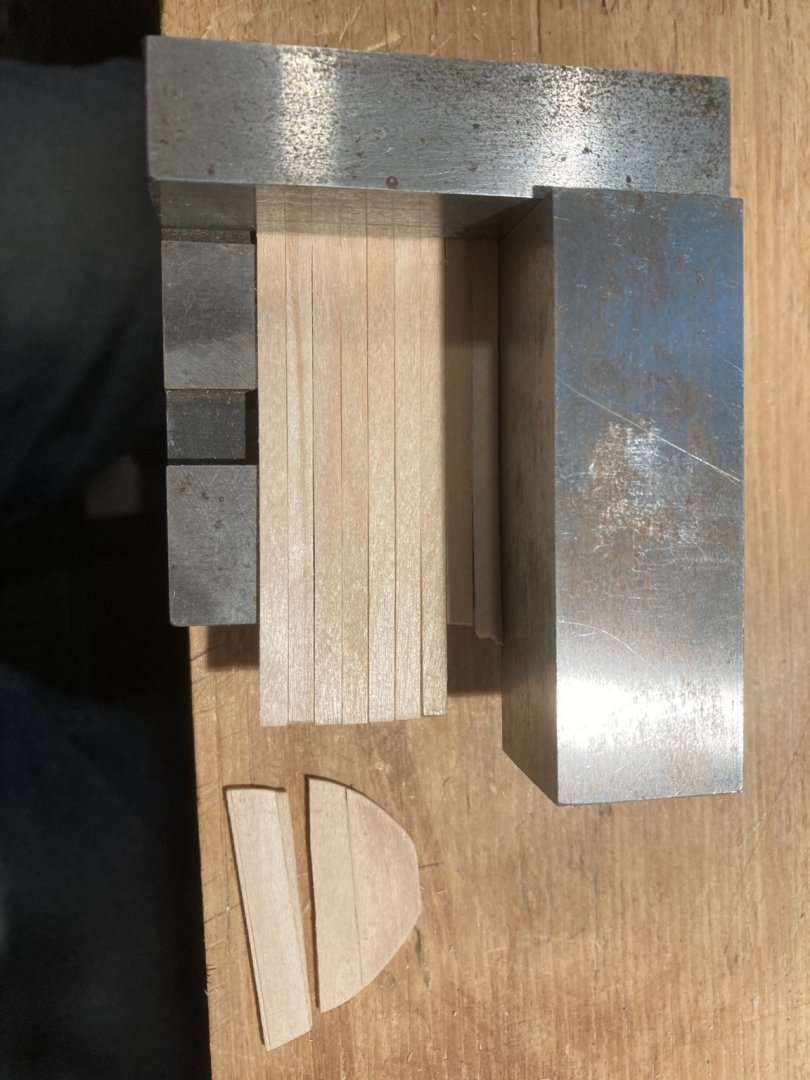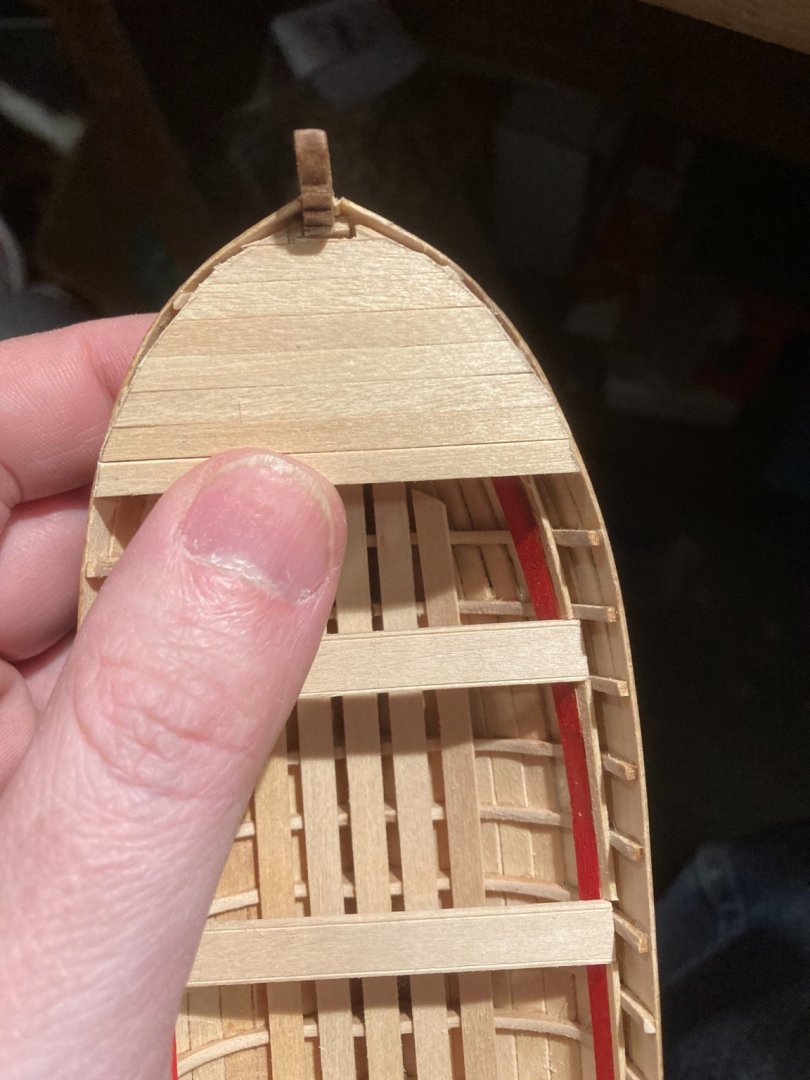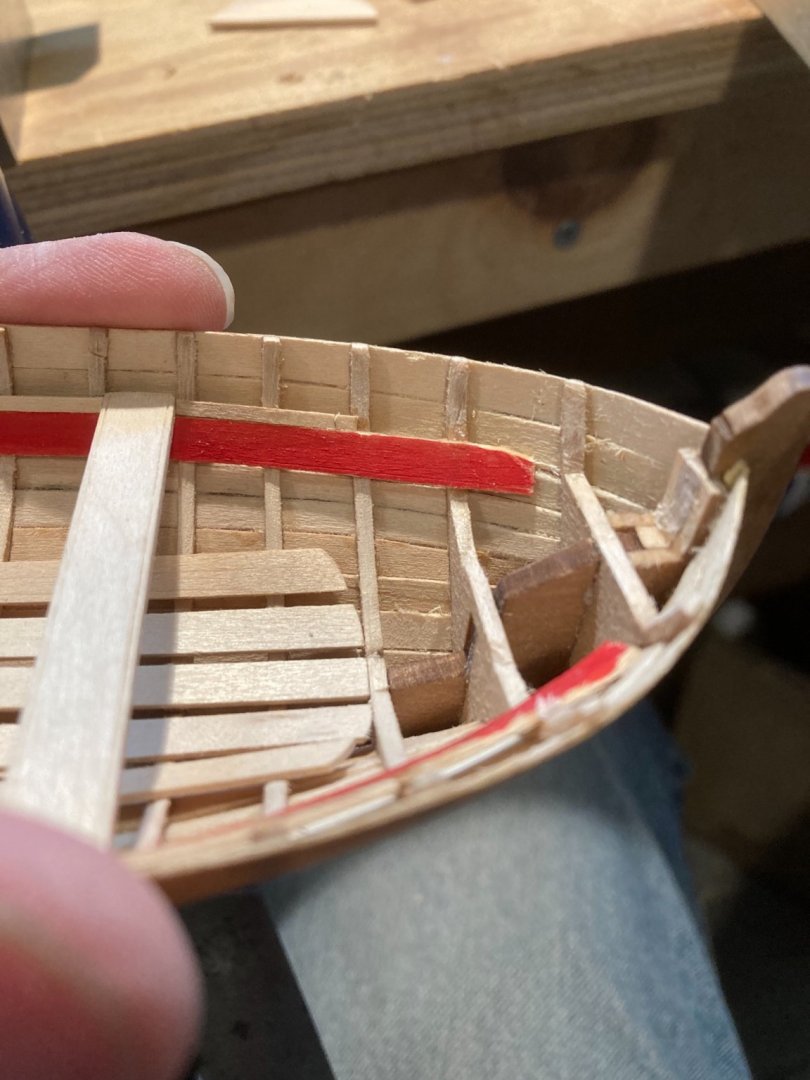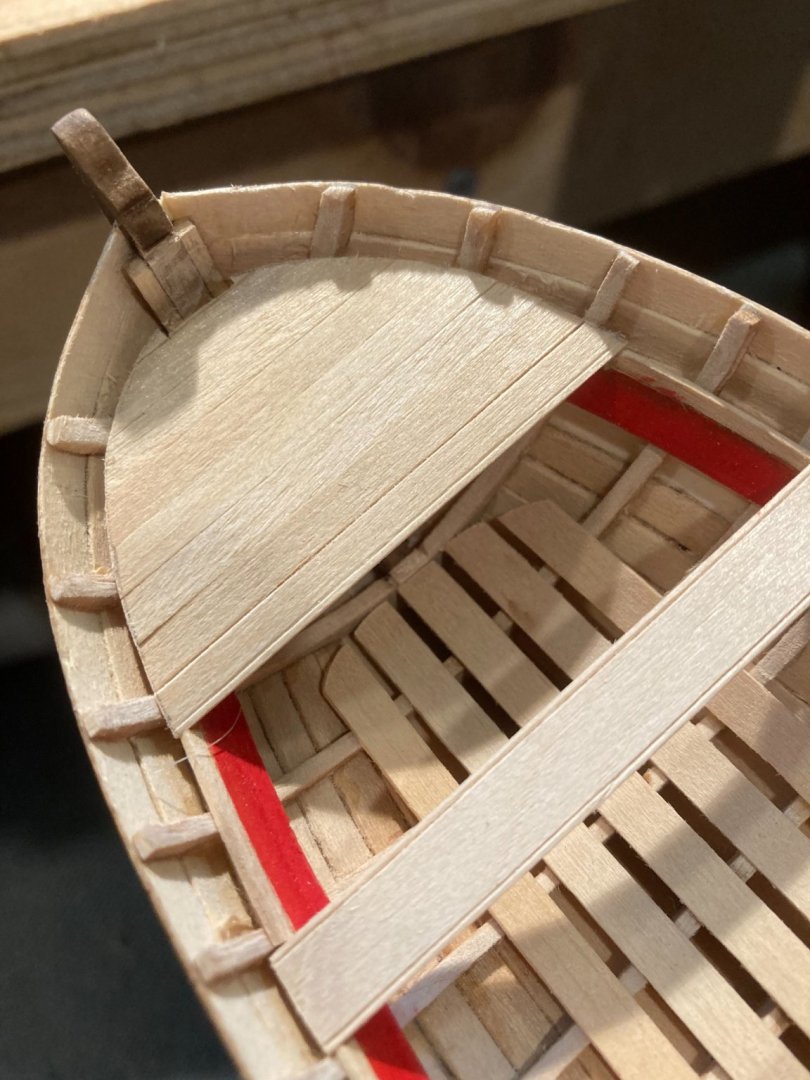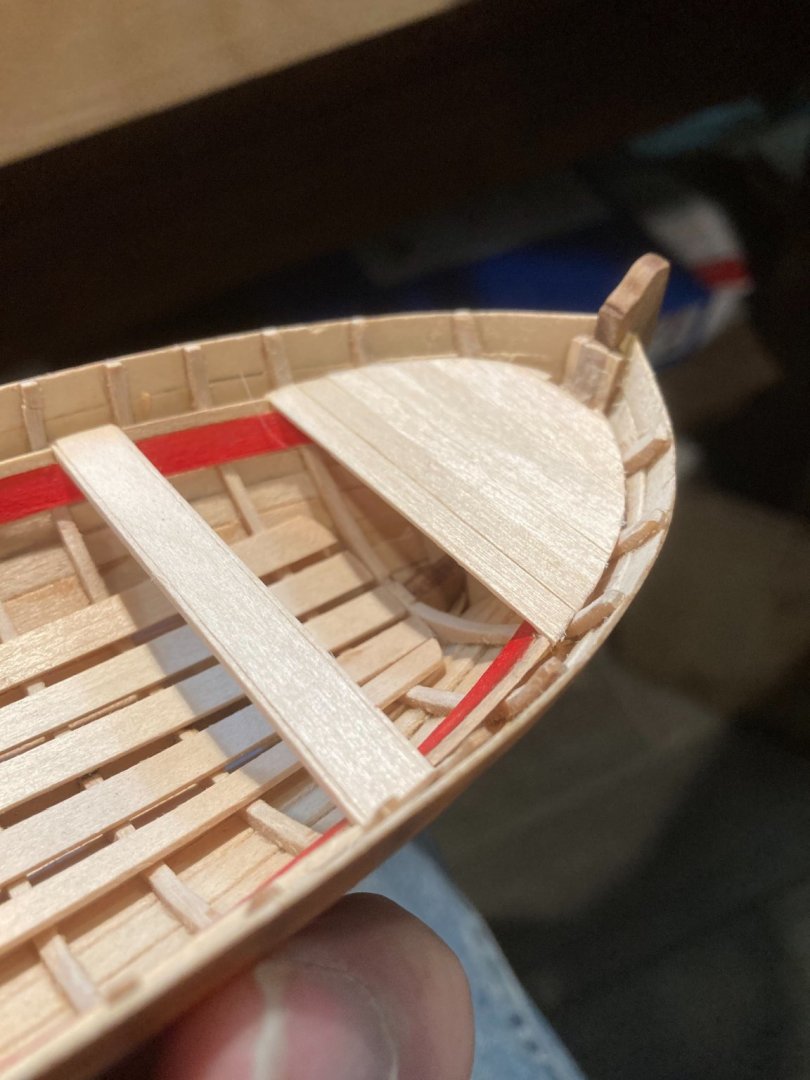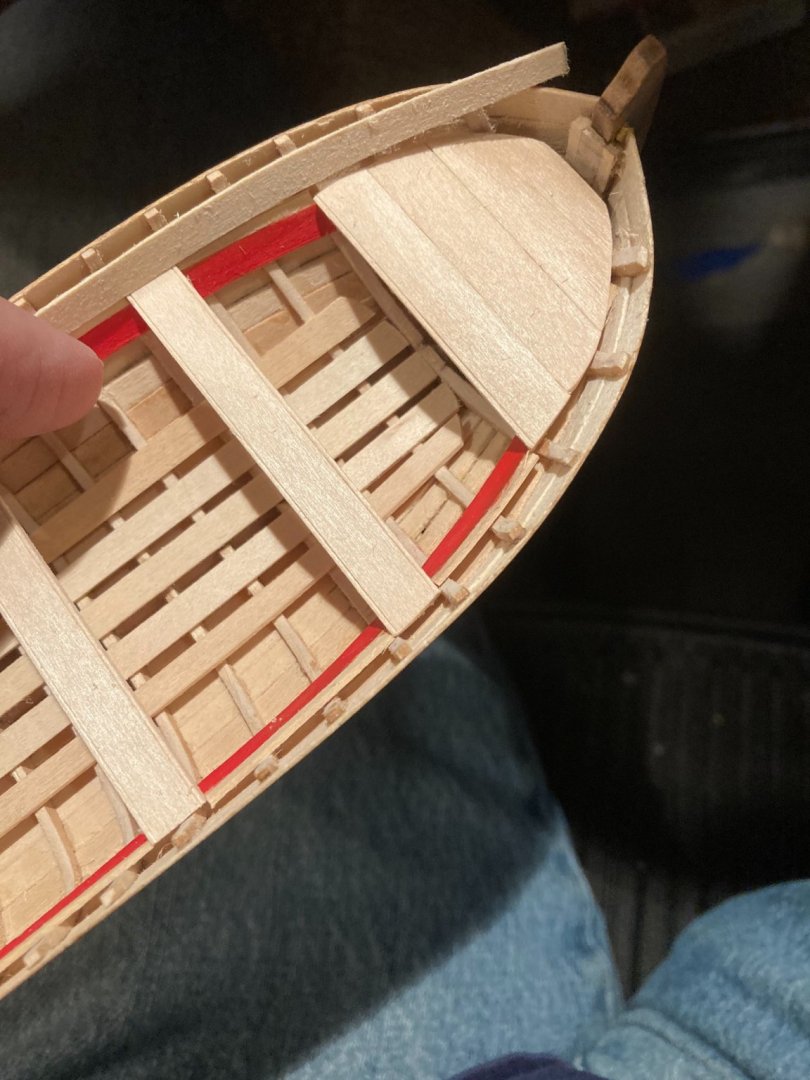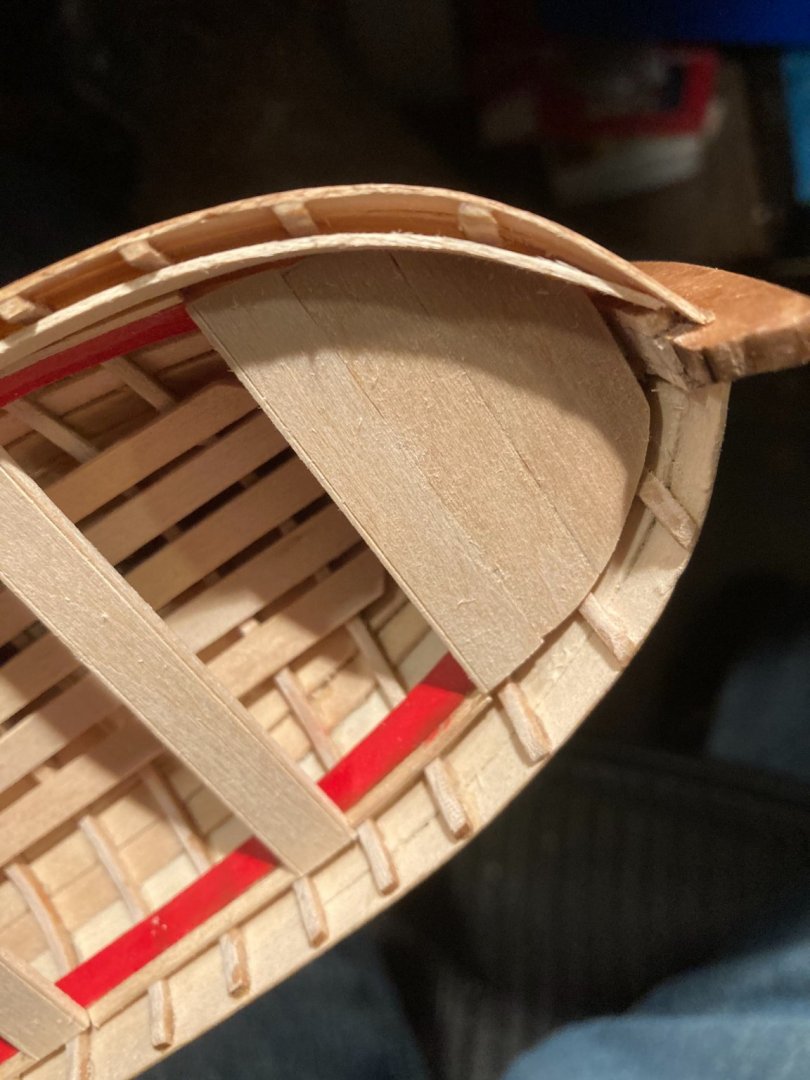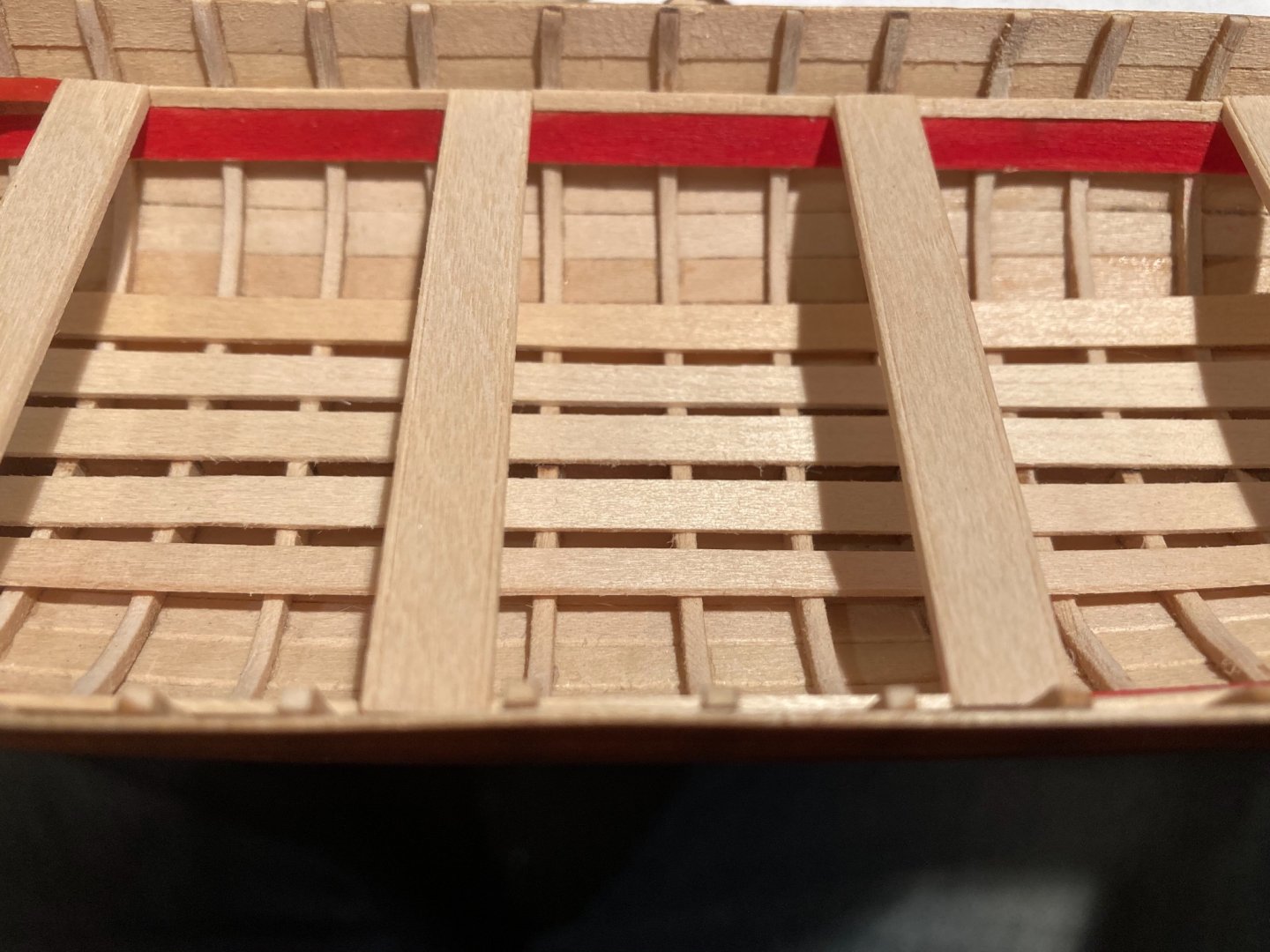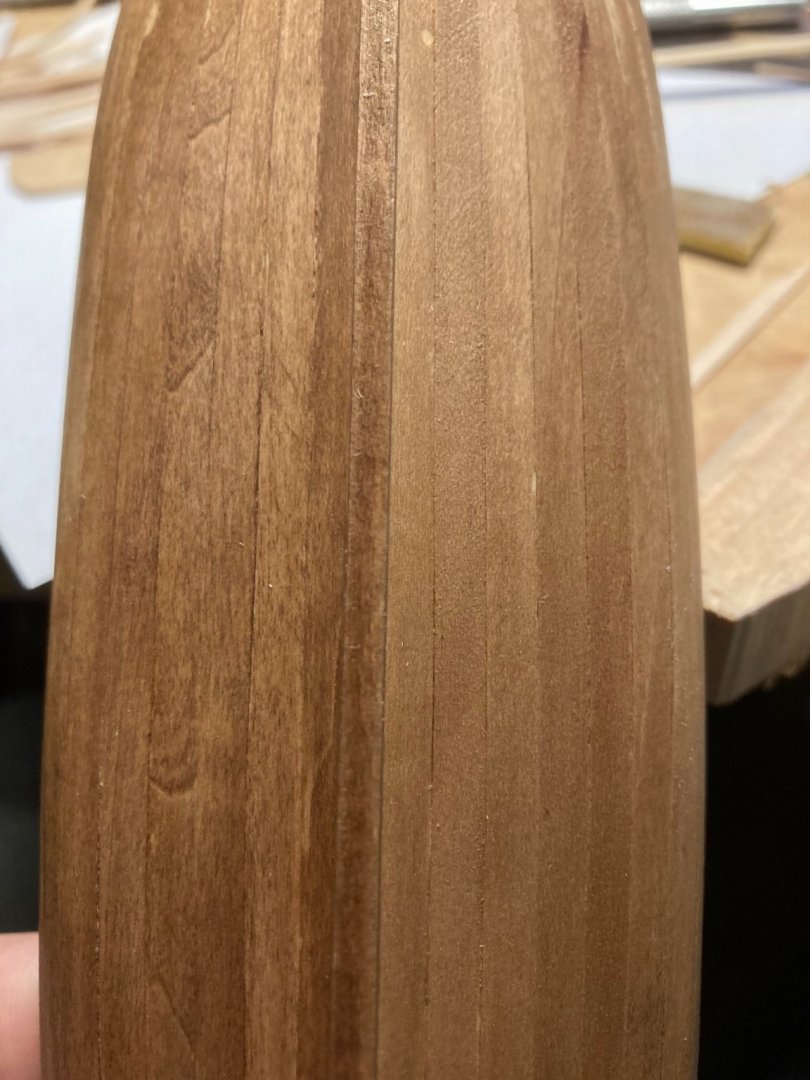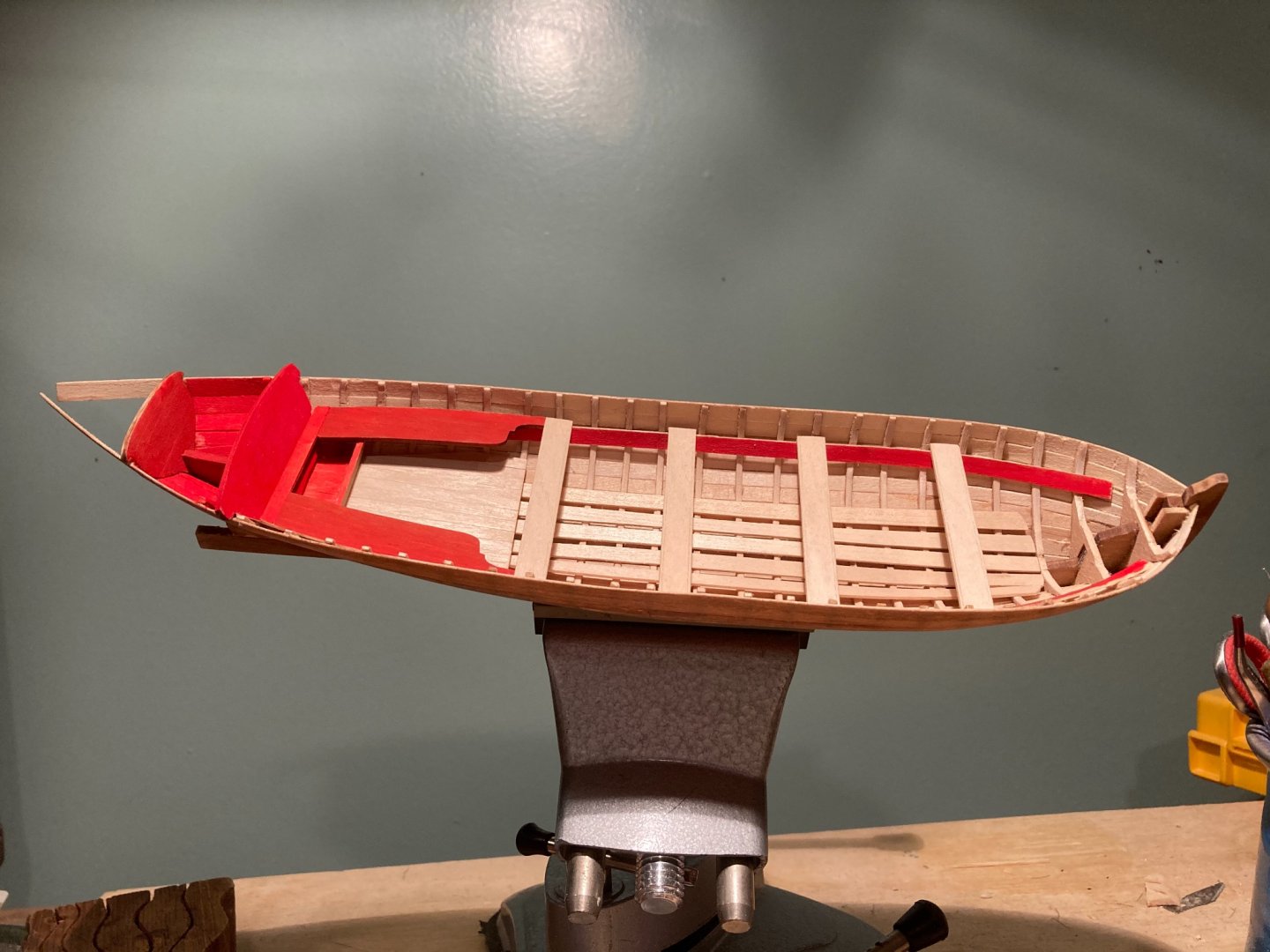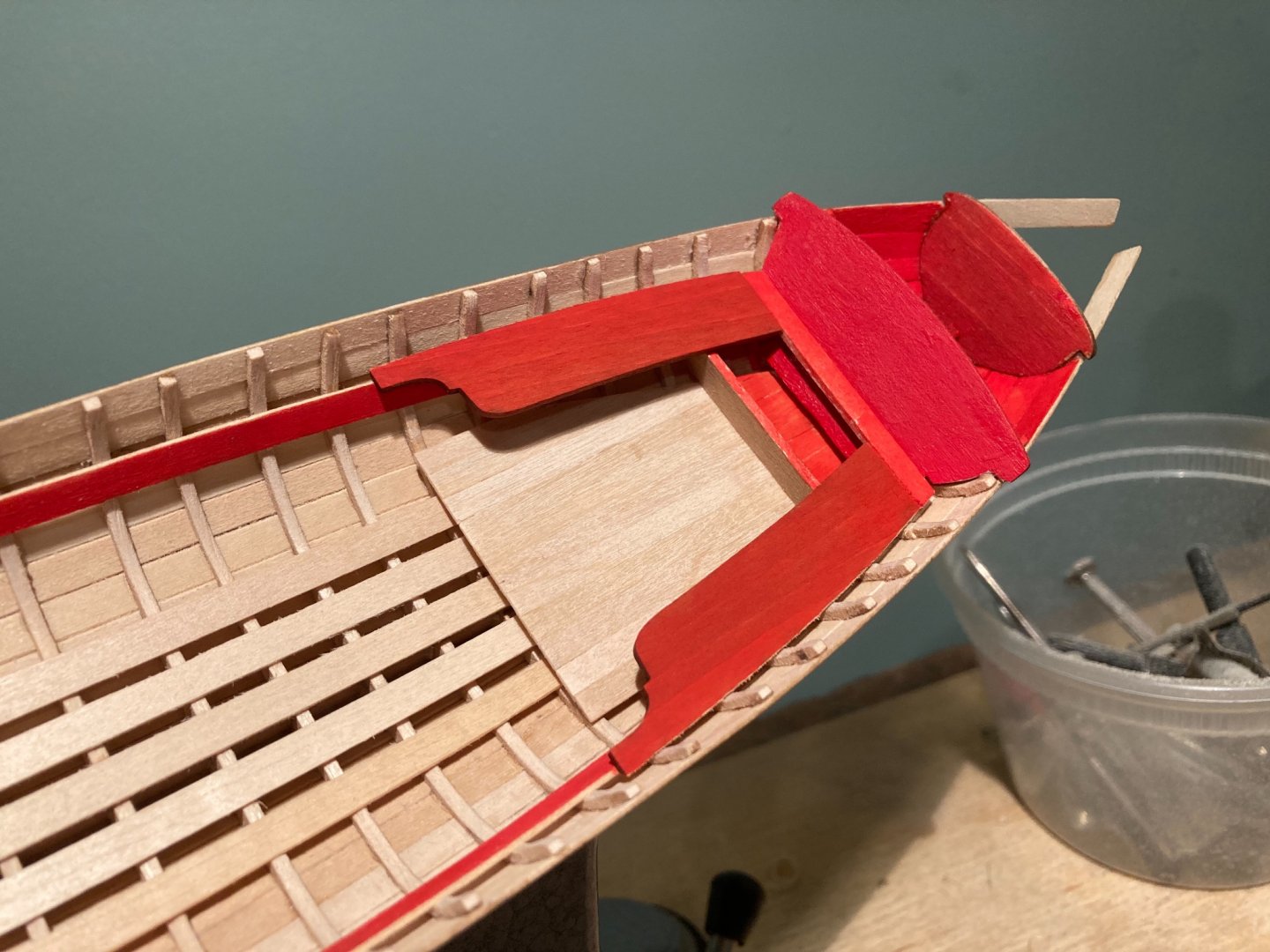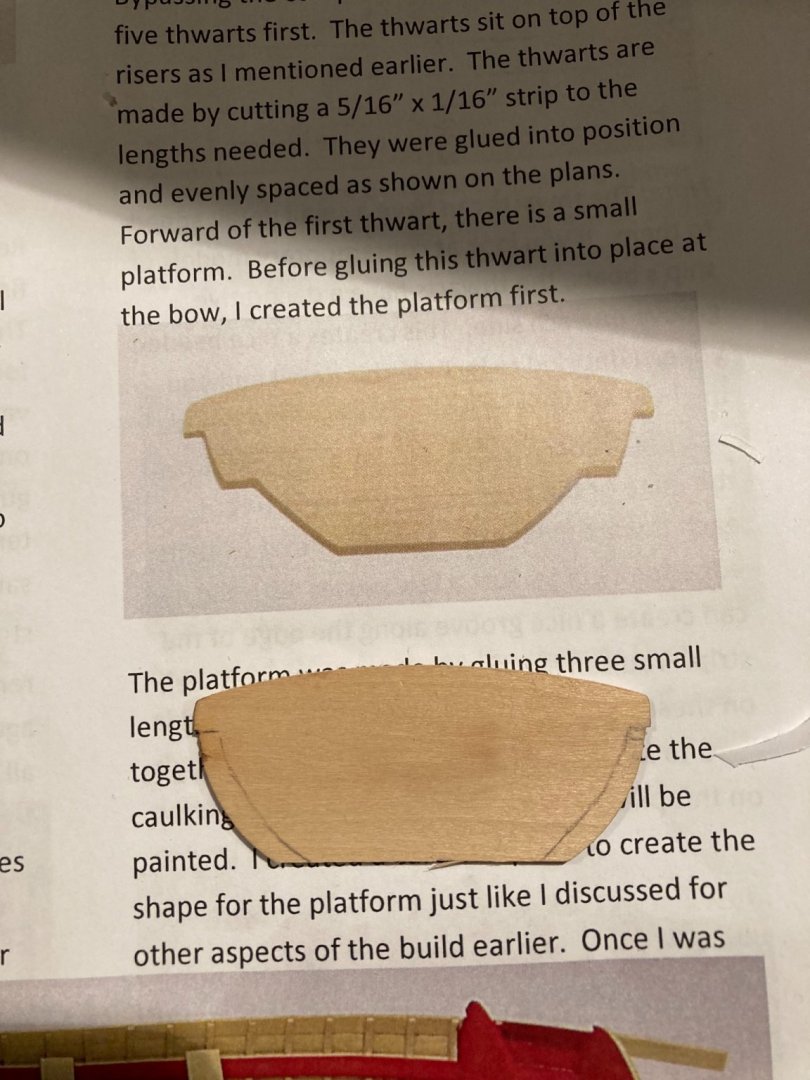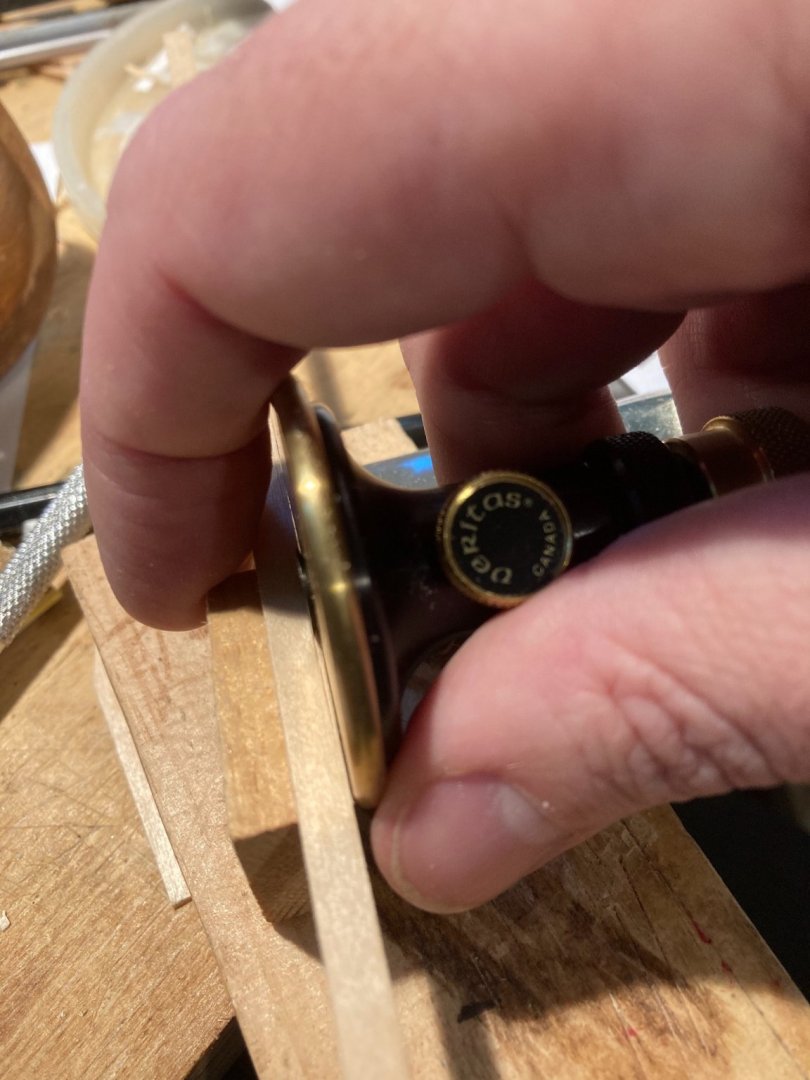-
Posts
986 -
Joined
-
Last visited
Content Type
Profiles
Forums
Gallery
Events
Everything posted by EricWilliamMarshall
-
The second strip was smaller and bent much easier as @DelF suggested! I then trimmed the top as prep for the top rail to come. I also started to paint.
- 123 replies
-
- Model Shipways
- Pinnace
-
(and 1 more)
Tagged with:
-
This time I make a paper pattern (by simply rubbing a pencil against the paper held to the boat). It wasn’t accurate enough to be a pattern, but it showed where and how to bend my planks. It seemed to go better than before.
- 123 replies
-
- Model Shipways
- Pinnace
-
(and 1 more)
Tagged with:
-
I found in this phase I have a wiggle in one side. It is subtle but can be seen if one looks down the side of the boat.
- 123 replies
-
- Model Shipways
- Pinnace
-
(and 1 more)
Tagged with:
-
- 123 replies
-
- Model Shipways
- Pinnace
-
(and 1 more)
Tagged with:
-
Have it not read @DelF’s advice yet, I started on to the inside planking. This seemed extra tricky. My first attempt didn’t yield to my skills and I noticed there would be glaring gaps given the size of the boards across the bow.
- 123 replies
-
- Model Shipways
- Pinnace
-
(and 1 more)
Tagged with:
-
.thumb.jpeg.fc5d633a7b34428fcf19419a73d56d55.jpeg)
chisels
EricWilliamMarshall replied to Anthony Hearne's topic in Modeling tools and Workshop Equipment
I will also add there is a lot of practical information in the book as will as great background knowledge from the point of view of both an user of tools and as a maker of tools. -
- 123 replies
-
- Model Shipways
- Pinnace
-
(and 1 more)
Tagged with:
-
She looks very handsome indeed. Thanks for sharing your bumps along the way; most instructive for me as I attempt to build this kit.
- 129 replies
-
- finished
- model shipways
-
(and 1 more)
Tagged with:
-
Thanks for the detailed log. I wish I read it earlier in my journey with this kit. She looks great!
- 190 replies
-
- pinnace
- model shipways
-
(and 1 more)
Tagged with:
-
Thanks for taking the trouble to record your trails and tribulations. I’ve read through a couple of times as I have worked on my copy of the kit. As this is my first attempt at planking, it was heartening to hear of your challenges. She looks beautiful; well done!
- 156 replies
-
- pinnace
- model shipways
-
(and 1 more)
Tagged with:
-
A careless oversight on my part may prove instructive to others. I sanded both sides of the bass wood hull with 280 grit sand paper but treated only one side with 500 grit sand paper and OOOO steel wool. I then, on both sides, used a water-based stain and then when dry, I used matte acrylic varnish on top (details above). In the image below you can see the difference in evenness and color. For this model, I’ll be painting the hull in order to minimize my mis-step. In the image below, the left side is the rougher surface.
- 123 replies
-
- Model Shipways
- Pinnace
-
(and 1 more)
Tagged with:
-
.thumb.jpeg.fc5d633a7b34428fcf19419a73d56d55.jpeg)
chisels
EricWilliamMarshall replied to Anthony Hearne's topic in Modeling tools and Workshop Equipment
That is great book! That and Hock’s book are my bibles. Thanks for mentioning it. -
I made a bit of progress. I used Grumbacher Academy Scarlet Lake watercolor with a brush. The wood was sanded down with 500 grid sandpaper and I used CA as my glue.
- 123 replies
-
- Model Shipways
- Pinnace
-
(and 1 more)
Tagged with:
-
I made some progress. I made the floor board from the coffee stirrers since I used a large number of my kit strips on attempting to bend planks. I used @Chuck’s suggestion to make paper patterns to find the correct fit and then cut the wood to match the paper’s shape. I used a mitre gauge to add the beading on the seats.
- 123 replies
-
- Model Shipways
- Pinnace
-
(and 1 more)
Tagged with:
-
A few thought to share: The surface of your wood counts for a lot! Wood sanded with just 280 grit sand paper will look more uneven then wood sanded with 500 grit or Fine steel wool. testing on scraps is always your friend! Many of the instructions for kits show a prototype of the kit being built, not the actual kit. More importantly, the model in the instructions may be built with another wood than what is in the kit. Bass wood is the most common wood found in kits but if you poke around here at MSW, you will see a variety of other woods being used. Alaskan Cedar, Pear, Holly, Boxwood, Cherry, etc. are all in play, each with a different hue and color. Plus each species has color variations! If you look at the work of @Chuck, you will see a similar shade of yellow to the instructions you are following. He is partial to the aforementioned Cedar and I believe he wrote the instructions you are following, if I’m not mistaken. Given all the above, I suggest playing around with 320 or 400 grit sandpaper to see how that changes the blotchy results of the staining. There are stains that can get the color yellow if you wish it but don’t feel you must achieve that exact shade of yellow for your model! Historical colors is a vast and tricky field of inquiry - not all the recipes nor materials are known, nor had they fade or oxidize or darken due to exposure, use or added materials. Books have been written on the topic! Keep up the great work!
-
It’s looking great so far and I’m sure your hard work will pay off! Regards from another Jersey native!
- 81 replies
-
- Bluejacket Shipcrafters
- Yankee Hero
-
(and 1 more)
Tagged with:
-
I’ve been away from MSW for a few months and have recently returned.Your progress is a delight to behold and a serious inspiration. Your log has prompted me in a number of ways - I’m chewing through a number of machinist’s tomes and I can say, i have a tiny lathe now and have even soldered in the last few weeks. (Nothing to show for it on the modeling front yet - the current project is more about learning planking.) In any case, thanks for sharing your beautiful work and happy New Year!
-
.thumb.jpeg.fc5d633a7b34428fcf19419a73d56d55.jpeg)
chisels
EricWilliamMarshall replied to Anthony Hearne's topic in Modeling tools and Workshop Equipment
Exactly! Plus I love the crisp sound a sharp chisel makes. -
.thumb.jpeg.fc5d633a7b34428fcf19419a73d56d55.jpeg)
chisels
EricWilliamMarshall replied to Anthony Hearne's topic in Modeling tools and Workshop Equipment
I would mention to anyone making the plunge to buy chisels, there are two learning curves: one, to learn to weld the chisel and ideally carve and two, to sharpen the chisel itself. The first Is dependent on the latter. Most, if not all of the best qualities of a chisel are lost if it isn’t sharp. (To be useful, lathes and mills also require some learning as well, in my opinion.) If you are model shipbuilder and can tie your shoes, then you have the patience and the dexterity to master sharpening. Part of that challenge, in my opinion, is knowing how a sharp tool behaves! So, if you are new to this, find someone to sharpen your tool for you to start with! Once mastered, excellent performance can come from even middling tools. Like everyone else, I vote for buying nice tools. More so for carving tools in particular, since a chisel will last decades if used correctly (or close to correctly). I still have my chisels bought in the late eighties. I will also mention that it is easy to recondition old carving tools and the like, and that can be a very cost-effective path. -
While Charles Darwin was a non-fiction writer, the HMS Beagle, which he sailed on and wrote about, is available in kit form from a number of makers. I realize that non-fiction may be a bit outside of the spirit of the thread.
-
They used to have a collection of R/C boats not included in the 'apprentice' series as well. Below is a link in the way back machine to the old Midwest website. https://web.archive.org/web/20050216100107/http://www.midwestproducts.com/RC boat models.htm
About us
Modelshipworld - Advancing Ship Modeling through Research
SSL Secured
Your security is important for us so this Website is SSL-Secured
NRG Mailing Address
Nautical Research Guild
237 South Lincoln Street
Westmont IL, 60559-1917
Model Ship World ® and the MSW logo are Registered Trademarks, and belong to the Nautical Research Guild (United States Patent and Trademark Office: No. 6,929,264 & No. 6,929,274, registered Dec. 20, 2022)
Helpful Links
About the NRG
If you enjoy building ship models that are historically accurate as well as beautiful, then The Nautical Research Guild (NRG) is just right for you.
The Guild is a non-profit educational organization whose mission is to “Advance Ship Modeling Through Research”. We provide support to our members in their efforts to raise the quality of their model ships.
The Nautical Research Guild has published our world-renowned quarterly magazine, The Nautical Research Journal, since 1955. The pages of the Journal are full of articles by accomplished ship modelers who show you how they create those exquisite details on their models, and by maritime historians who show you the correct details to build. The Journal is available in both print and digital editions. Go to the NRG web site (www.thenrg.org) to download a complimentary digital copy of the Journal. The NRG also publishes plan sets, books and compilations of back issues of the Journal and the former Ships in Scale and Model Ship Builder magazines.


